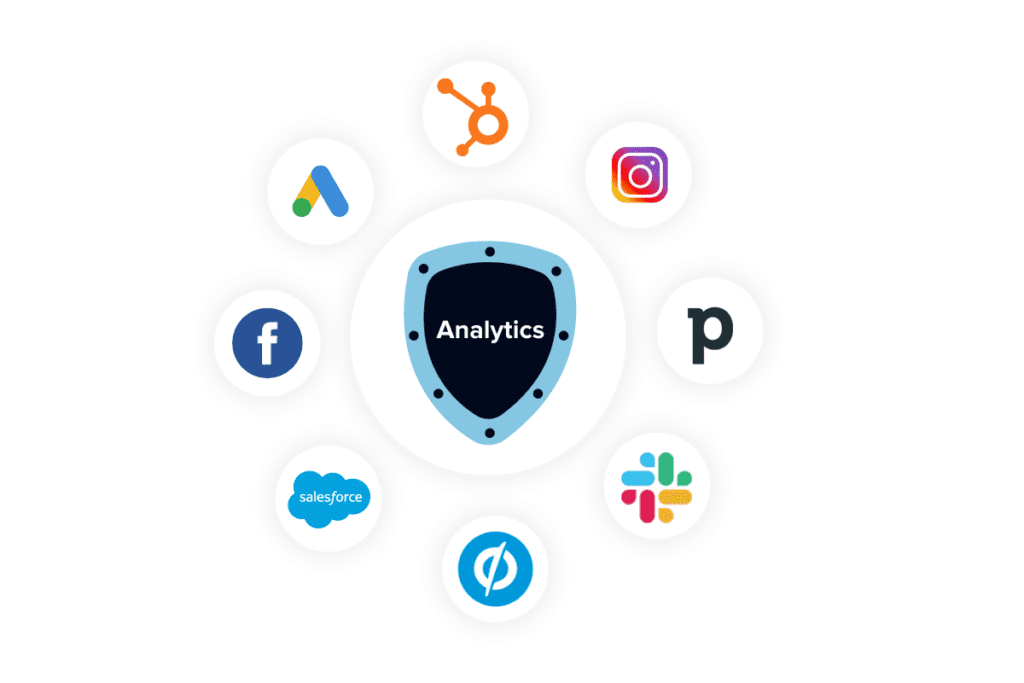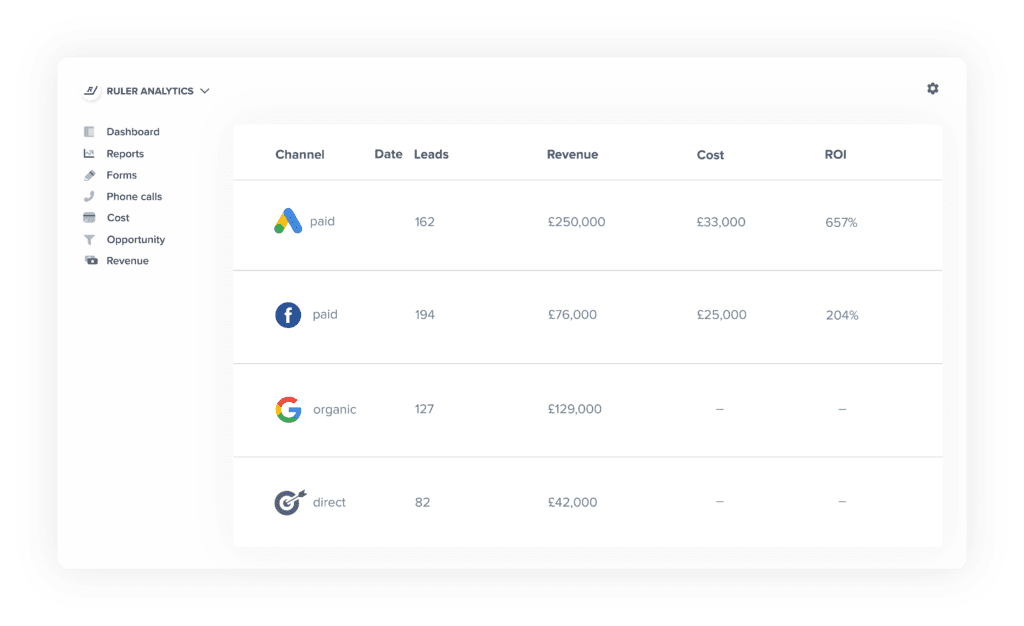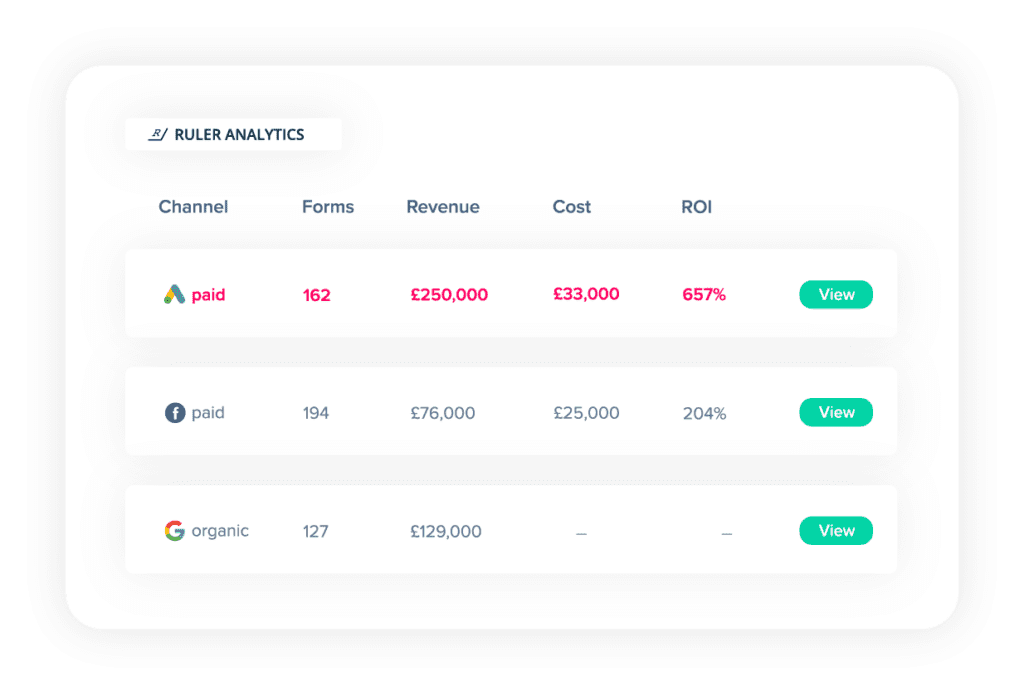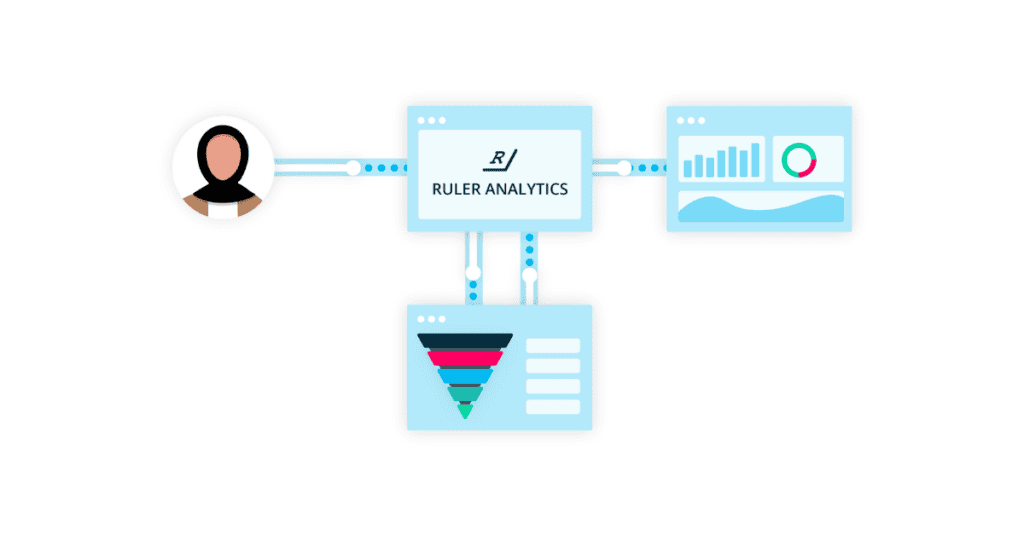Delve into marketing analytics and learn what it is and how you can better use your data to scale your business growth with this comprehensive guide.
Marketers are swamped with data. When they’re using as many as 13 different marketing channels at once, that’s huge amounts of data and touchpoints that they need to track.
Tools like Google Analytics exist to help marketers make sense of the noise.
But what exactly is marketing analytics, and how can you drill down to what matters most and use it to drive your bottom line?
In this blog we discuss:
So, let’s dive right in.
Marketing analytics is the study of data you can gather from marketing tools, channels and campaigns.
By using marketing analytics, you can better understand how channels and campaigns drive conversions, your consumer profile and behaviour, plus patterns in how users respond to your content.

The goal of marketing analytics is simple. Marketers want to be able to easily view all of the relevant data that will support them to make insightful decisions that will drive more traffic, leads and sales.
Related: Marketing analytics tools you need to try
Marketing analytics should help you:
Marketing analytics is more than a nice to have, they’re essential to a successful marketing team. And a successful business.
Here’s why marketing analytics matter:
While you might have a hunch that a particular channel is going to be great for your business, it’s often hard to get sign off without numbers and proof.

👉 Book a demo to see this report in action
Marketing analytics does exactly that for you. And it’s hardly surprising. Numbers can be persuasive.
You could tell your senior leadership team that you think content brings in high-quality leads. Or you could show them exactly how many leads you’ve brought in and how much revenue they’ve converted into.
Related: How to track leads through the full customer journey so you can track revenue
The great thing about data is it can help you optimise your strategy ahead. Once you can definitively prove what works, you can then turn on and off, what is and isn’t working.
🚀 Pro Tip
Data-driven decisions are hard to make when your data is disconnected. With a tool like Ruler in play, you can better understand how revenue is influenced by marketing touchpoints and campaigns.
Book a demo and see the data in play.
But think about how much data you can access in tools like Google Analytics. Be honest, are you looking at all of it?
Probably not.
But once you know what data is useful, you can create really streamlined reports that will help you get to the crux of your marketing impact.
Related: How to track marketing revenue in Google Analytics
Some marketers like writing blogs like this one. Others like getting creative on social media. But what you might prefer might not be what’s best for your business.
With marketing analytics you can compare and contrast channels, campaigns and ads to see what’s working best.
Analysing your ROI and ROAS means you can find what’s working the best to drive actions that impact the bottom of your funnel.

Data-driven decisions are important. If you don’t know what they are and why they matter, then here’s a quick recap.
Data-driven decisions are ones where you use the data you have to turn ads off that don’t work, add budget to channels that do and more.
But getting the right data in play isn’t plain sailing.
Here are the key challenges you might be facing with your marketing analytics.
Google Analytics is a fantastic tool to better understand how users are engaging with your website. But the issue is, it tends to not provide the right information, all of the time.
While it can tell you the traffic on your site, it can’t link your traffic to your leads. You can’t definitively prove, as a B2B marketer, that a blog leads to a new customer (not without an additional tool anyway).
Related: Best marketing attribution tools to try
This data discrepancy can be pretty frustrating for marketers as it means you’re not quite connecting the dots.
And without this valuable data, you can’t truly link your sales to your marketing efforts.
Think about your website. Anonymous website users visit your site. When they convert, they’re sent to your CRM. But the data of their website visitors is lost as it doesn’t connect to your CRM.
And then, when leads convert into sales, that revenue data is stuck in your CRM and is locked out of your analytics tools. Without this data, how can you possibly scale? Any decisions you make will be based on instinct as opposed to real data.
Related: How to link your marketing data so you can track the full customer journey
Not all users convert online. That leaves a big data gap for marketers relying on offline conversions like phone calls.
Marketers in the B2B space or those selling high-value products also have to contend with long sales cycles. Think about it like this. The longer your sales cycles, the more data. And when your data is disconnected, that’s even more insight lost.
💡 Pro Tip
Don’t be left in the dark. Read our guide to offline conversion tracking to see how you can make sure you get an overview of every single conversion, no matter where it takes place.
We know now, that with the right data in place, you can make more of your marketing.
You can:
However, solving the challenges encountered with marketing analytics can be tricky.
But let me just pitch you something.
Imagine if there was a tool that you could use that would connect your website to your CRM and your analytics tools. This tool acts as a go-between for your favourite applications and sends the data you need, where you need it most.
Introducing Ruler Analytics. This marketing attribution solution allows marketers to track every visitor to your website and store key marketing data that will allow you to prove where closed sales, and new leads, originated from.
Related: Read our full guide to marketing attribution and the models you can use
Here’s how it works.
An anonymous visitor lands on your website. Ruler tracks their source information and how they engage with your site.
Ruler does this for every encounter that an individual has, by using code to track your first-party cookies.
When that visitor converts into a lead, Ruler fires all of the marketing data over to your CRM.

Ruler continues to track the lead. When they convert, it scrapes the revenue data inputted against that contact in your CRM and fires it to your analytics tools, like Google Analytics and Facebook Ads Manager.
What you’re left with is complete transparency on the impact of your marketing and solid marketing analytics data.
And there you have it. A quick guide to marketing analytics, the challenges it poses and the benefits it has when done correctly.
If you’re interested in learning more about how you can supercharge your marketing analytics, then book a demo with our team to see the data in action.
And remember, closed-loop marketing attribution, aka linking your sales to your marketing, is a sure-fire way to definitively prove your ROI and optimise your outputs.
Download our complete guide to closed-loop here.